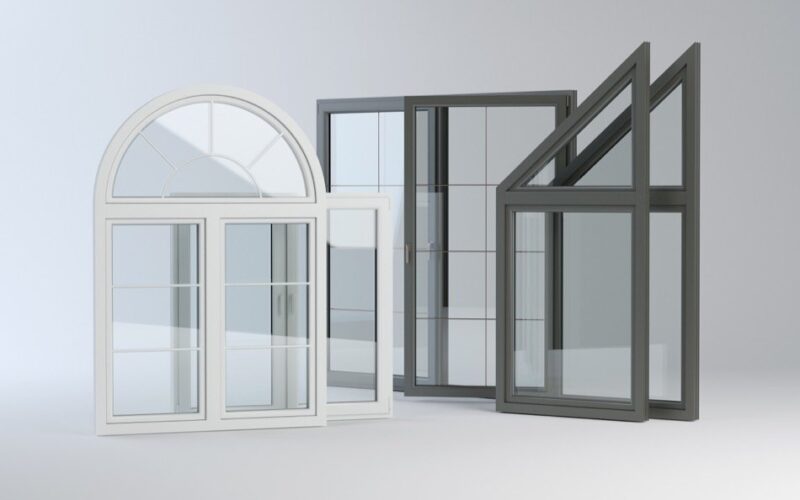Windows are a crucial element of any home, serving both functional and aesthetic purposes. The right option can enhance your home’s natural light, improve energy efficiency, and complement your architectural style. With so many options available, choosing the right type can be overwhelming. To help you make an informed decision, here’s a breakdown of the most popular selections for your home, along with their key features and benefits.
While selecting the right window type is important, you may also want to consider window tinting as an enhancement. Adding a tint to your windows can help reduce heat and glare, protect your interiors from UV damage, and improve energy efficiency. This treatment is especially beneficial for large windows, such as picture or sliding windows, where sunlight exposure is higher.
Single-Hung Windows
Single-hung =are a classic choice for many homes. They feature two sashes (panels of glass within the frame), but only the bottom sash is operable, meaning it can be moved up and down. The top sash remains fixed in place.
Pros
Single-hung are often more affordable than other types and are easy to operate. They provide a traditional look and are commonly found in older homes or homes with a classic design aesthetic.
Cons
Since only the bottom sash can be opened, ventilation can be limited compared to other window types. Additionally, cleaning the outside of the top sash can be challenging from the inside.
Double-Hung Windows
Double-hung are similar to single-hung but with one key difference: both the top and bottom sashes are operable. This means you can open either sash to allow for more flexible ventilation.
Pros
The ability to open both sashes makes double-hung ideal for controlling airflow. They are also easier to clean since both sashes can tilt inward, allowing you to clean the exterior from inside your home.
Cons
Double-hung are typically more expensive than single-hung, and the additional moving parts can increase the risk of wear and tear over time.
Casement Windows
Casement are hinged on the side and open outward like a door, usually operated by a crank. They are often used in areas where you want to maximize ventilation and have unobstructed views.
Pros
Casement offer excellent ventilation, as they can be fully opened to catch breezes. They also provide a tight seal when closed, making them one of the most energy-efficient Canada door and window types.
Cons
Because they open outward, casement can be obstructed by exterior elements like trees or other buildings. The crank mechanism can also wear out over time, requiring maintenance.
Awning Windows
Awning are similar to casement but are hinged at the top and open outward from the bottom. They are often placed higher on walls for privacy or to complement other types of windows.
Pros
Awning can be left open during light rain, as their design prevents water from entering. They provide good ventilation and are typically energy-efficient due to their tight seal.
Cons
Like casement windows, awnings can be obstructed by exterior elements. Their limited size also means they may not provide as much natural light or ventilation as other types.
Sliding Windows
Sliding operate on a track and slide horizontally to open and close. They are commonly used in modern homes and are popular for their ease of use.
Pros
Sliding are easy to operate and require minimal maintenance due to their simple design. They provide large, unobstructed views and are a good choice for wide window openings.
Cons
Because only one side of the window can be opened at a time, ventilation can be limited. Sliding also have a less airtight seal compared to casement or awning, which can affect energy efficiency.
Bay and Bow Windows
Bay and bow are more elaborate designs that extend outward from the home. A bay window typically consists of a large center frame flanked by two smaller windows at an angle. A bow window features a more gradual curve with four or more windows.
Pros
Bay and bow create a dramatic focal point in any room, adding space, natural light, and panoramic views. They can also provide a cozy nook for seating or storage.
Cons
These windows are generally more expensive and require more complex installation. They may also require additional structural support due to their size and weight.
Picture Windows
Picture are large, fixed, and do not open. They are designed to frame outdoor views, much like a picture frame, and are often used in areas where you want to maximize natural light.
Pros
Picture windows offer unobstructed views and can make a room feel larger and more open. They are highly energy-efficient since they don’t have any moving parts.
Cons
Because they cannot be opened, picture options do not provide ventilation. They can also be difficult to clean, particularly if they are large or located in hard-to-reach areas.
The Importance of Quality Windows
Choosing the right type of windows for your home depends on your specific needs, preferences, and the architectural style of your home. Whether you prioritize ventilation, energy efficiency, ease of maintenance, or aesthetic appeal, there’s a style to match. By understanding the different types available, you can make an informed decision that enhances both the beauty and functionality of your home.
